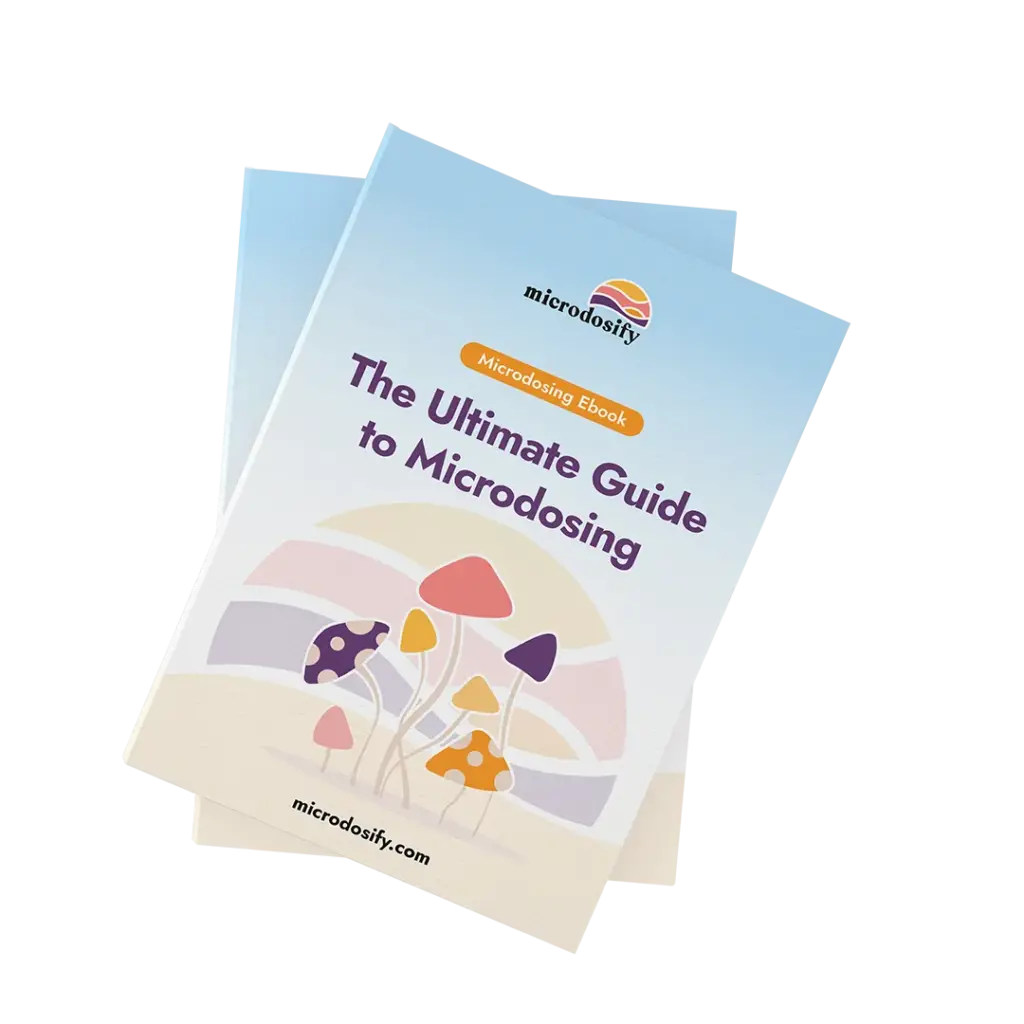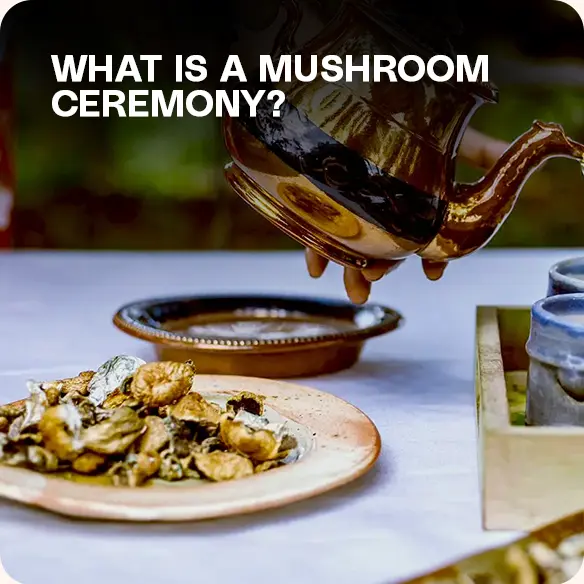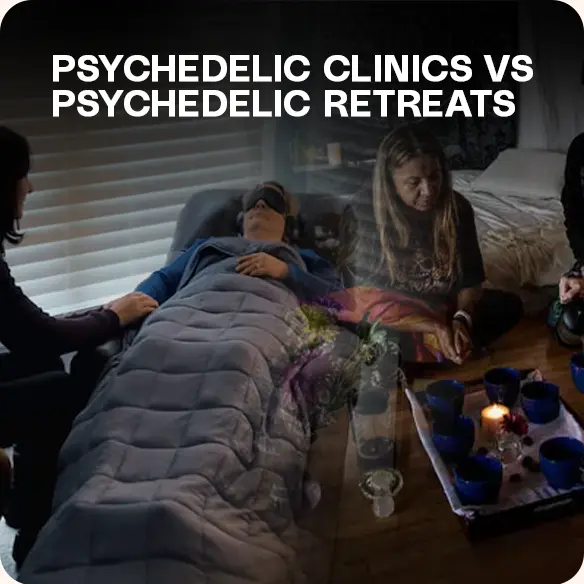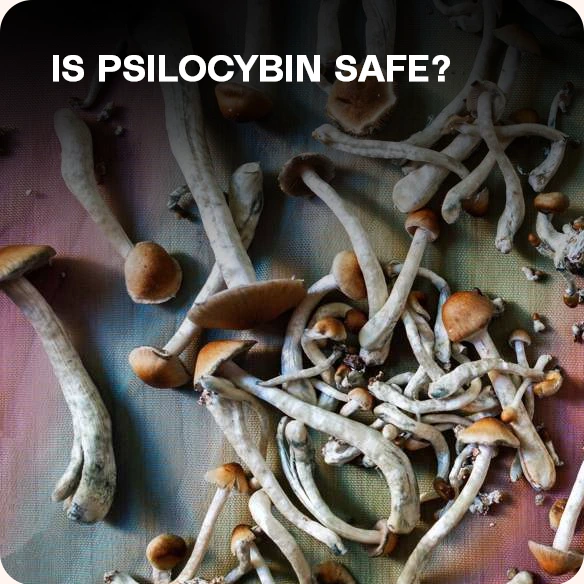A magic mushroom ceremony is a structured, intentional gathering where participants consume psilocybin mushrooms under the guidance of trained facilitators or traditional healers in a safe, supportive environment.
These ceremonies typically last 6-8 hours and include preparation, the magic mushroom experience itself, and integration discussions.
Ceremonies range from traditional indigenous practices preserving 3,000+ year old rituals to modern therapeutic settings combining psychedelic science with ceremonial structure.
Key Points
- Duration: Complete ceremonies last 6-8 hours from opening rituals through integration
- Facilitation: Led by trained guides, traditional healers, or licensed therapists depending on setting
- Group Size: Typically 8-15 participants with 2-4 facilitators maintaining safe ratios
- Preparation Required: Pre-ceremony meetings, intention setting, dietary guidelines
- Ceremonial Elements: Opening/closing rituals, music, altar spaces, group sharing
- Cost Range: $200-800 for single ceremonies; $2,000-6,000 for retreat programs with multiple ceremonies
- Legal Context: Traditional ceremonies continue in Mexico; modern versions operate in Oregon, Colorado, Jamaica, Netherlands
What Happens During a Shroom Ceremony?
Mushroom ceremonies follow structured formats balancing guidance with personal autonomy.
While specific elements vary by tradition and facilitator training, most ceremonies share common phases:
Phase 1: Opening and Preparation (30-60 minutes)
Ceremonies begin with participants gathering in prepared spaces often living rooms, ceremonial halls, or natural outdoor settings. Facilitators lead opening rituals that may include:
- Circle introductions and sharing intentions
- Smudging with sage or palo santo (space clearing)
- Setting group agreements (confidentiality, respect, support)
- Guided meditation or breathwork to center participants
- Explanation of ceremony structure and safety protocols
- Final bathroom breaks and physical preparation
This phase establishes psychological safety and group cohesion. Participants prepare sleeping areas with blankets, eye masks, and water bottles.
Facilitators review how to request support non-verbally during intense experiences.
Phase 2: Psilocybin Consumption (15-30 minutes)
Participants take psilocybin mushrooms in various forms under facilitator guidance:
- Dried mushrooms: Eaten directly, often with honey or chocolate to mask taste
- Mushroom tea: Brewed from ground dried mushrooms, faster absorption
- Lemon tek: Mushrooms soaked in lemon juice, intensifies and shortens experience
- Capsules: Pre-measured doses in gelatin or vegetarian capsules
Typical ceremony doses range from 2-4 grams dried mushrooms, though this varies by tradition, participant experience, and ceremony goals.
Traditional Mazatec ceremonies sometimes use higher doses (5+ grams) for healing work.
Facilitators consume ceremonial doses themselves in some traditions (especially indigenous practices) or remain completely sober in therapeutic models.
Participants are encouraged to reflect on intentions as effects begin.
Phase 3: Journey Experience (4-6 hours)
The main ceremony phase unfolds as psilocybin takes effect.
Onset occurs within 20-40 minutes, with peak effects at 2-3 hours, gradually diminishing over 4-6 hours total.
During this phase:
- Individual exploration: Most time spent lying down with eye masks, exploring internal landscapes
- Curated music: Facilitators play carefully selected playlists guiding emotional journey
- Minimal intervention: Facilitators observe and support without directing experiences
- Available support: Participants can request presence, hand-holding, or guidance
- Bathroom accompaniment: Facilitators assist with walking if coordination impaired
- Group check-ins: Some traditions include guided group moments during peak
Experiences vary dramatically between individuals. Some report profound insights, emotional releases, or mystical experiences.
Others have challenging moments requiring facilitator support. Some experience primarily visual phenomena with less psychological depth.
Phase 4: Integration and Closing (1-2 hours)
As effects diminish, ceremonies transition to integration and closure.
Participants gradually return to normal consciousness while maintaining openness and vulnerability established during journeys.
Integration activities include:
- Sharing circles where participants describe experiences
- Facilitator reflections and thematic observations
- Journaling time for personal processing
- Closing rituals (gratitude circles, group hugs, prayers)
- Light food and social connection
- Discussion of post-ceremony integration practices
Ceremonies typically end with participants feeling emotionally raw but supported.
Many report feeling exhausted yet alive, with insights needing days or weeks to fully integrate.
Traditional Mazatec Mushroom Ceremonies
Mazatec ceremonies from Oaxaca, Mexico represent the longest continuous psilocybin ceremony tradition available to outsiders.
These ceremonies preserve indigenous practices dating back thousands of years, brought to Western attention by María Sabina in the 1950s.
Mazatec Ceremony Characteristics
Traditional Mazatec ceremonies differ significantly from modern therapeutic versions:
- Conducted at night: Ceremonies begin after dark, lasting until dawn
- Curandera/curandero leadership: Experienced healers, often elderly women, lead ceremonies
- Icaros and prayers: Healers sing traditional songs and Catholic prayers throughout
- Healing focus: Ceremonies address specific ailments rather than general exploration
- Higher doses: Often 10-30 pairs of mushrooms (roughly 5-7 grams dried equivalent)
- Minimal preparation: Less formal pre-ceremony structure than modern versions
- Home settings: Conducted in healers’ homes with family sometimes present
Mazatec healers view mushrooms as “niños santos” (holy children) serving as intermediaries between human and spirit worlds.
Ceremonies emphasize divination and healing rather than psychological growth frameworks used in contemporary Western approaches.
Accessing Traditional Ceremonies
Traditional Mazatec ceremonies remain available in Oaxaca, though commercialization and tourism have complicated authenticity.
Recommendations for respectful participation:
- Seek introductions through trusted sources rather than tourist agencies
- Learn basic Spanish and Mazatec cultural context
- Offer appropriate payment ($50-150 typically) respecting healer’s time
- Understand you’re entering sacred practice, not entertainment
- Follow healer’s guidance on preparation and conduct
- Consider impact of outsider presence on indigenous communities
Modern Therapeutic Magic Mushroom Ceremonies
Contemporary ceremonies blend traditional elements with psychological frameworks and safety protocols.
These ceremonies operate in legal jurisdictions (Oregon, Colorado, Jamaica, Netherlands) or underground in prohibition areas.
Therapeutic Ceremony Models
| Aspect | Traditional Mazatec | Modern Therapeutic |
|---|---|---|
| Setting | Healer’s home, nighttime | Retreat centers, flexible timing |
| Facilitation | Indigenous curandera/curandero | Licensed therapists or trained facilitators |
| Music | Live singing (icaros) | Curated playlists (classical, ambient) |
| Preparation | Minimal formal structure | Extensive pre-ceremony meetings |
| Integration | Limited post-ceremony support | Structured integration sessions |
| Dosing | Higher (5-15+ grams) | Moderate (2-4 grams typically) |
| Duration | All night (8-12 hours) | Afternoon/evening (6-8 hours) |
| Cost | $50-150 single ceremony | $300-800 single ceremony |
Facilitation Training and Credentials
Modern ceremony facilitators come from diverse backgrounds:
- Licensed therapists: Psychologists, counselors, social workers adding psychedelic work to practices
- Traditional apprentices: People trained by indigenous practitioners
- Psychedelic training programs: Graduates of CIIS, Fluence, or other certification programs
- Underground practitioners: Self-trained or mentor-trained facilitators operating illegally
Oregon and Colorado require state licensing for legal ceremony facilitation.
Training involves 100-200+ hours covering psychopharmacology, ethics, trauma-informed care, and supervised practice ceremonies.
What Music Is Played During Ceremonies?
Music serves as a primary guidance tool during magic mushroom ceremonies, shaping emotional landscapes and journey progression.
Facilitators curate playlists matching ceremony phases:
Ceremony Music Phases
Onset Phase (0-1 hour): Gentle, ambient music easing participants into altered states. Artists like Jon Hopkins, East Forest, or classical pieces by Arvo Pärt create calm, expansive atmospheres.
Peak Phase (1-3 hours): More dynamic, emotionally evocative music supporting deep exploration. Classical favorites include Beethoven’s late string quartets, Barber’s Adagio for Strings, or Górecki’s Symphony No. 3. Modern options include Sigur Rós, Hammock, or specifically composed psychedelic therapy music.
Integration Phase (3-5 hours): Returning to gentler, uplifting music. Acoustic, nature sounds, or celebratory pieces support emergence from intensity.
Johns Hopkins research uses primarily classical Western music. Traditional ceremonies use live singing, drums, or rattles. Some modern facilitators blend traditions, incorporating indigenous instruments with contemporary ambient music.
How to Prepare for a Magic Mushroom Ceremony
Preparation significantly impacts ceremony experiences and outcomes.
Most legitimate ceremonies require pre-ceremony meetings and personal preparation work:
2-4 Weeks Before Ceremony
- Attend orientation meetings with facilitators
- Complete medical and psychological screening
- Clarify intentions through journaling
- Review medication interactions (especially SSRIs)
- Arrange ceremony day logistics (transportation, childcare)
- Begin reducing alcohol, cannabis, and recreational drugs
1 Week Before Ceremony
- Follow any dietary restrictions given by facilitators
- Increase meditation or contemplative practices
- Avoid stressful commitments immediately before ceremony
- Get adequate sleep and physical rest
- Finalize intention-setting work
Day of Ceremony
- Fast 2-4 hours before consumption (reduces nausea)
- Wear comfortable, loose clothing
- Arrive early for final preparations
- Bring journal, water bottle, any personal items for comfort
- Clear schedule for following day (no driving or important commitments)
What to Expect During Your First Ceremony
First-time ceremony participants commonly experience anxiety, excitement, and uncertainty. Understanding typical patterns helps reduce fear:
Common First-Time Experiences
Physical sensations: Nausea during onset (20-40 minutes), body temperature fluctuations, muscle tension or relaxation, altered proprioception. Most physical discomfort passes within the first hour.
Emotional waves: Unexpected laughter or tears, fear followed by relief, grief processing, joy, or awe. Emotions often feel more intense than normal life but are temporary and safe to experience.
Visual phenomena: Geometric patterns with eyes closed, enhanced colors, flowing or breathing surfaces, dissolution of boundaries between objects. Intensity varies dramatically between individuals.
Psychological content: Memory surfacing, insights about relationships or life patterns, symbolic imagery, sense of presence or guidance. Not everyone experiences profound psychological content.
Challenging Moments
Most ceremonies include difficult moments. Facilitators help participants “lean into” challenges rather than resist:
- Anxiety waves: Breathe deeply, remember everything is temporary, request facilitator presence
- Nausea/purging: Normal part of process in many traditions, facilitators provide buckets and support
- Confusion/fear: Surrender to experience rather than trying to control, trust facilitators
- Emotional overwhelm: Allow tears or other expressions, don’t judge feelings
Integration After Mushroom Ceremonies
Integration translates ceremony insights into lasting life changes. This ongoing process often determines whether ceremonies produce enduring benefits or remain isolated experiences.
Integration Practices
Days 1-7 Post-Ceremony:
- Journal extensively about experience details and insights
- Avoid major life decisions while processing
- Maintain gentle schedule with rest time
- Connect with other ceremony participants if possible
- Notice dreams and continued psychological processing
Weeks 2-8:
- Identify 1-3 specific changes to implement from insights
- Attend integration circles or therapy
- Notice habitual patterns highlighted during ceremony
- Make gradual behavior adjustments
- Journal weekly about integration progress
Months 2-6:
- Assess which insights created lasting change
- Consider whether additional ceremony would benefit growth
- Maintain practices adopted post-ceremony
- Reflect on ceremony through new perspective as time passes
How to Find Legitimate Mushroom Ceremonies
Finding safe, ethical ceremonies requires research and discernment. Red flags and green flags help identify quality facilitators:
Green Flags (Good Signs)
- Thorough medical and psychological screening
- Clear pricing and refund policies
- Facilitator training credentials verifiable
- Multiple pre-ceremony meetings required
- Integration support included
- References or reviews from past participants
- Emphasis on safety and informed consent
- Comfortable declining unsuitable applicants
Red Flags (Warning Signs)
- No screening or accepting everyone
- Sexual or romantic advances from facilitators
- Pressure to book immediately
- Guarantees of specific outcomes
- Lack of emergency protocols
- Vague about facilitator training
- Excessively high prices without justification
- Creating dependency (“you need to keep coming back”)
Frequently Asked Questions
How much do magic mushroom ceremonies cost?
Single ceremonies range $200-800; retreat programs with multiple ceremonies cost $2,000-6,000. Traditional Mazatec ceremonies cost $50-150. Pricing varies by location, facilitator experience, accommodation quality, and included services like meals and integration support.
Are magic mushroom ceremonies safe?
Ceremonies with proper screening, trained facilitation, and medical protocols show excellent safety records.
Physical risks remain minimal for healthy individuals. Psychological challenges occur but are manageable with skilled facilitators. Underground ceremonies without proper screening carry higher risks.
Can I do a magic mushroom ceremony alone?
Solo ceremonies are possible but not recommended for first experiences. Facilitators provide crucial support during challenging moments, ensure physical safety, and help process insights.
After several facilitated ceremonies, some people successfully conduct solo practices with proper preparation.
How often should you do magic mushroom ceremonies?
Most facilitators recommend 3-6 months between ceremonies for integration. Some traditions involve weekly or monthly ceremonies, while others suggest annual or less frequent participation.
Quality of integration matters more than ceremony frequency.
What should I bring to a maigc mushroom ceremony?
Bring comfortable clothing, journal, water bottle, any medications you need, eye mask (if not provided), blanket or special items for comfort.
Facilitators typically provide sleeping mats, blankets, and basic supplies. Check with specific ceremony organizers for their recommended list.





